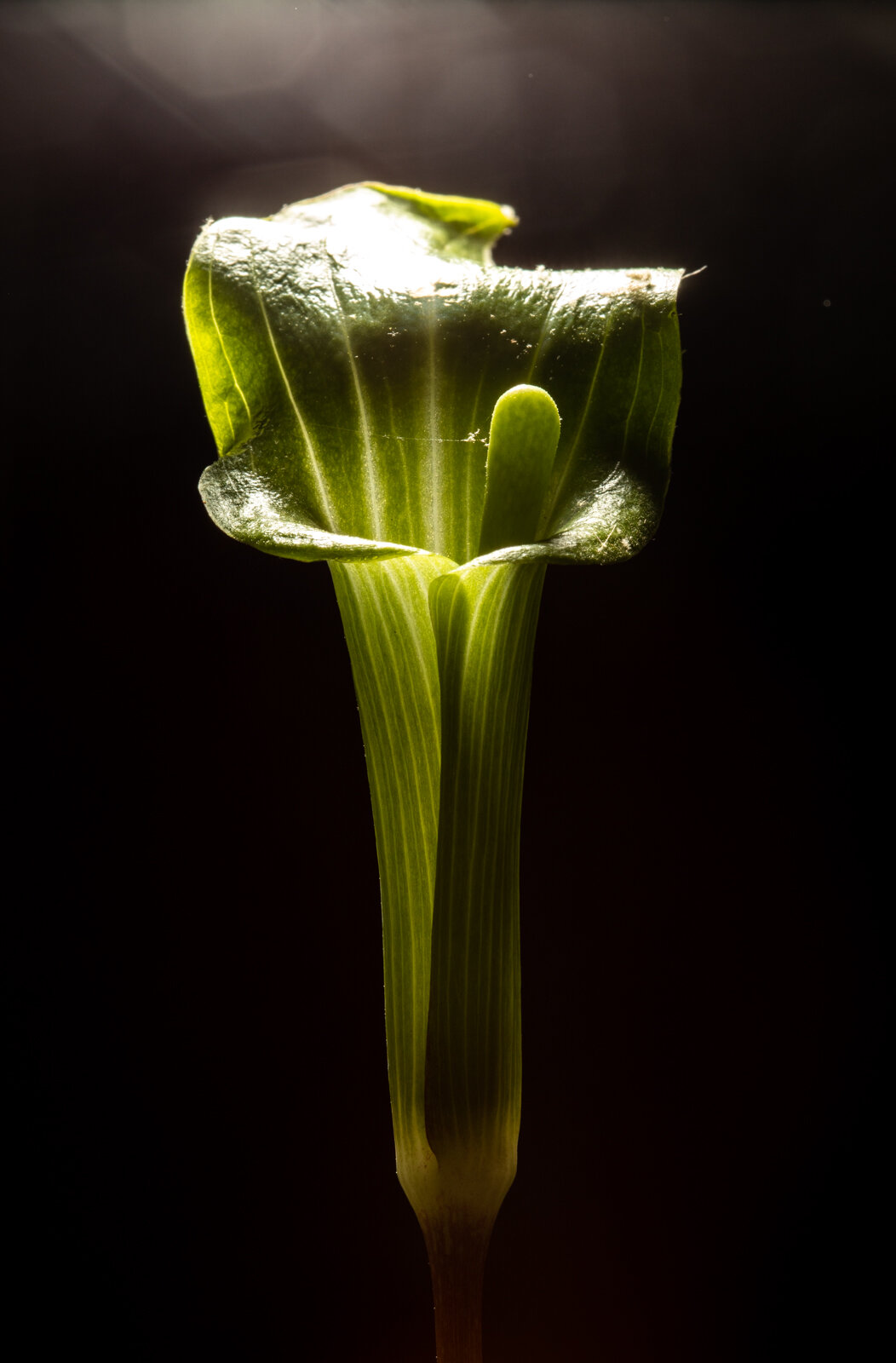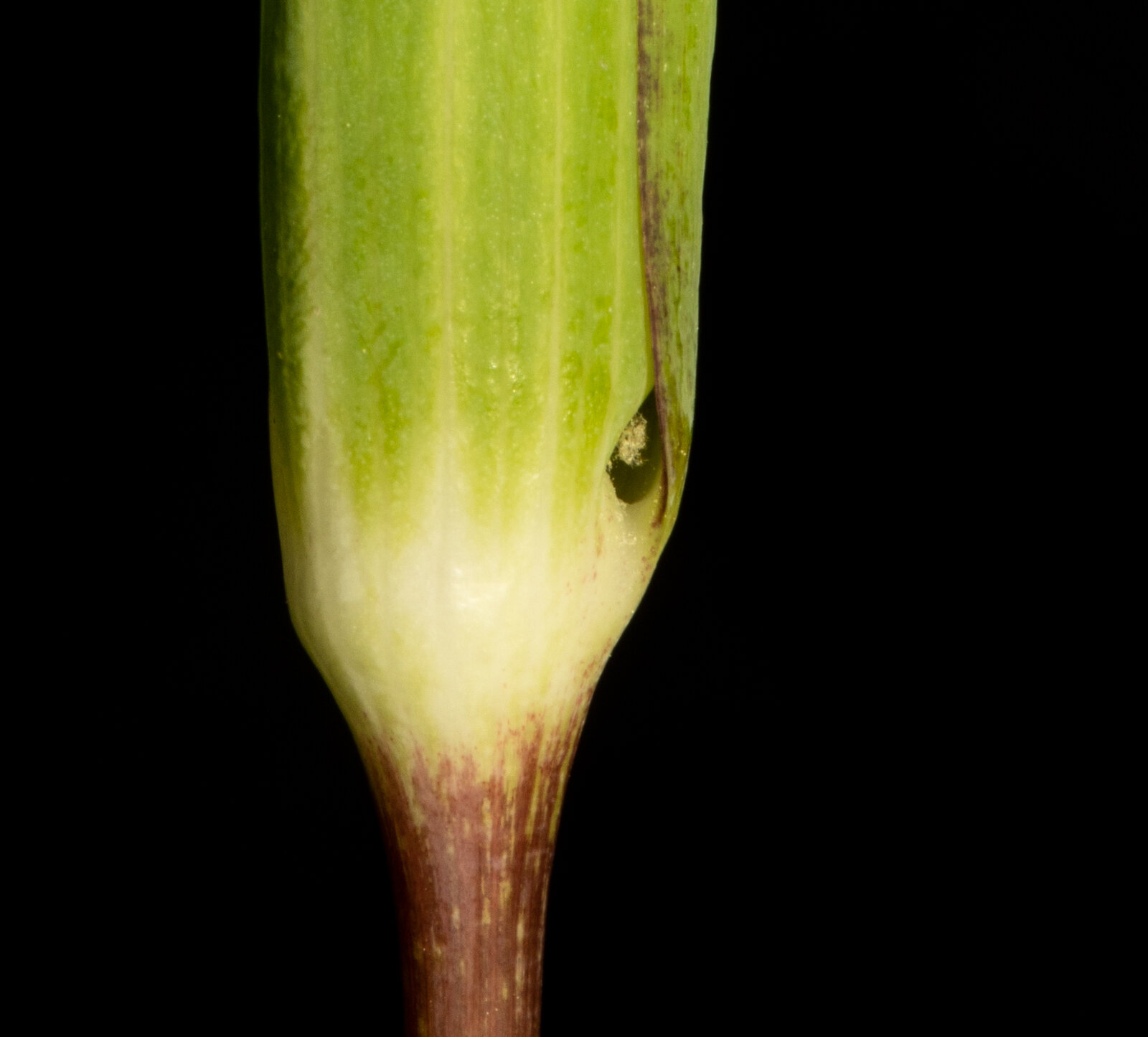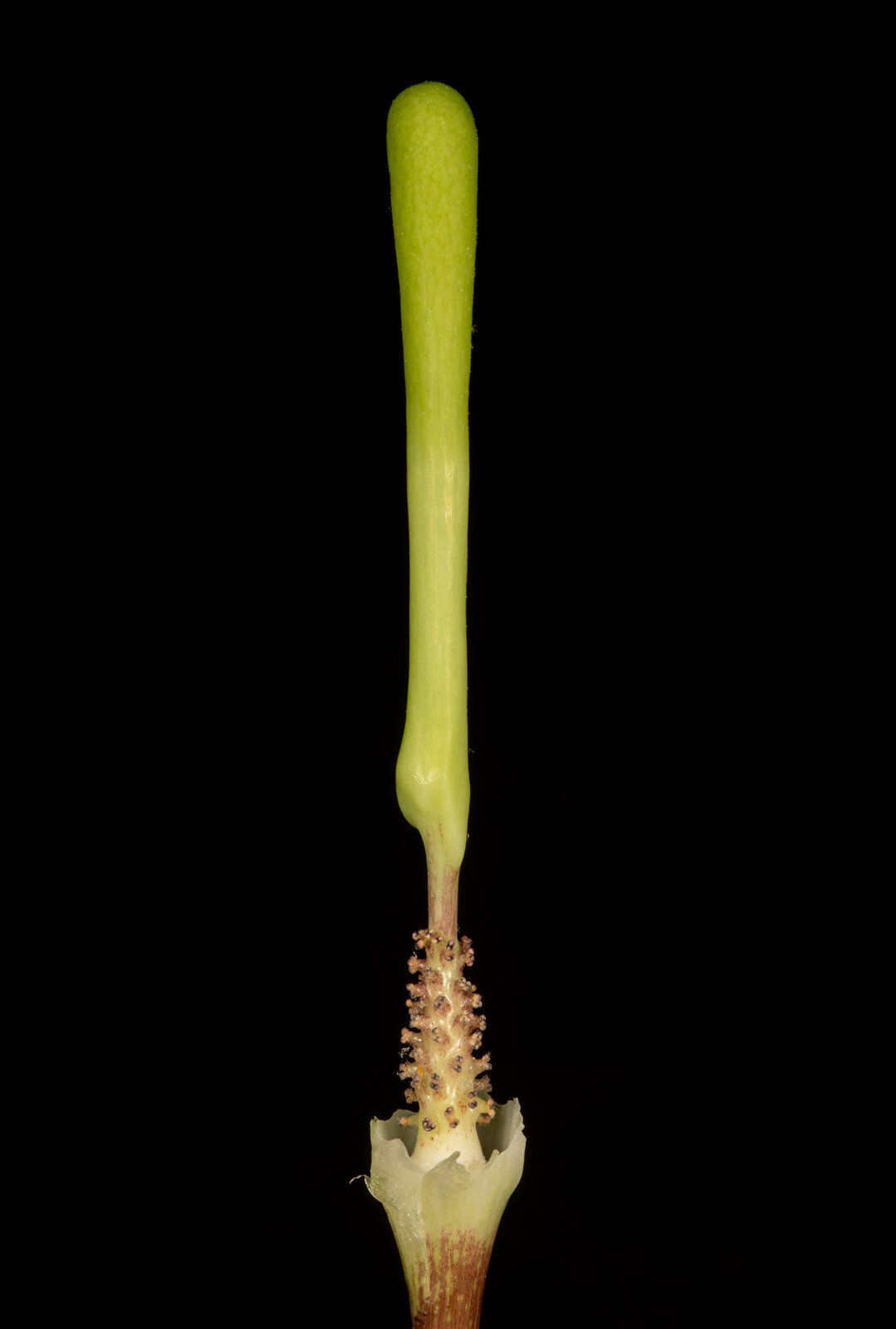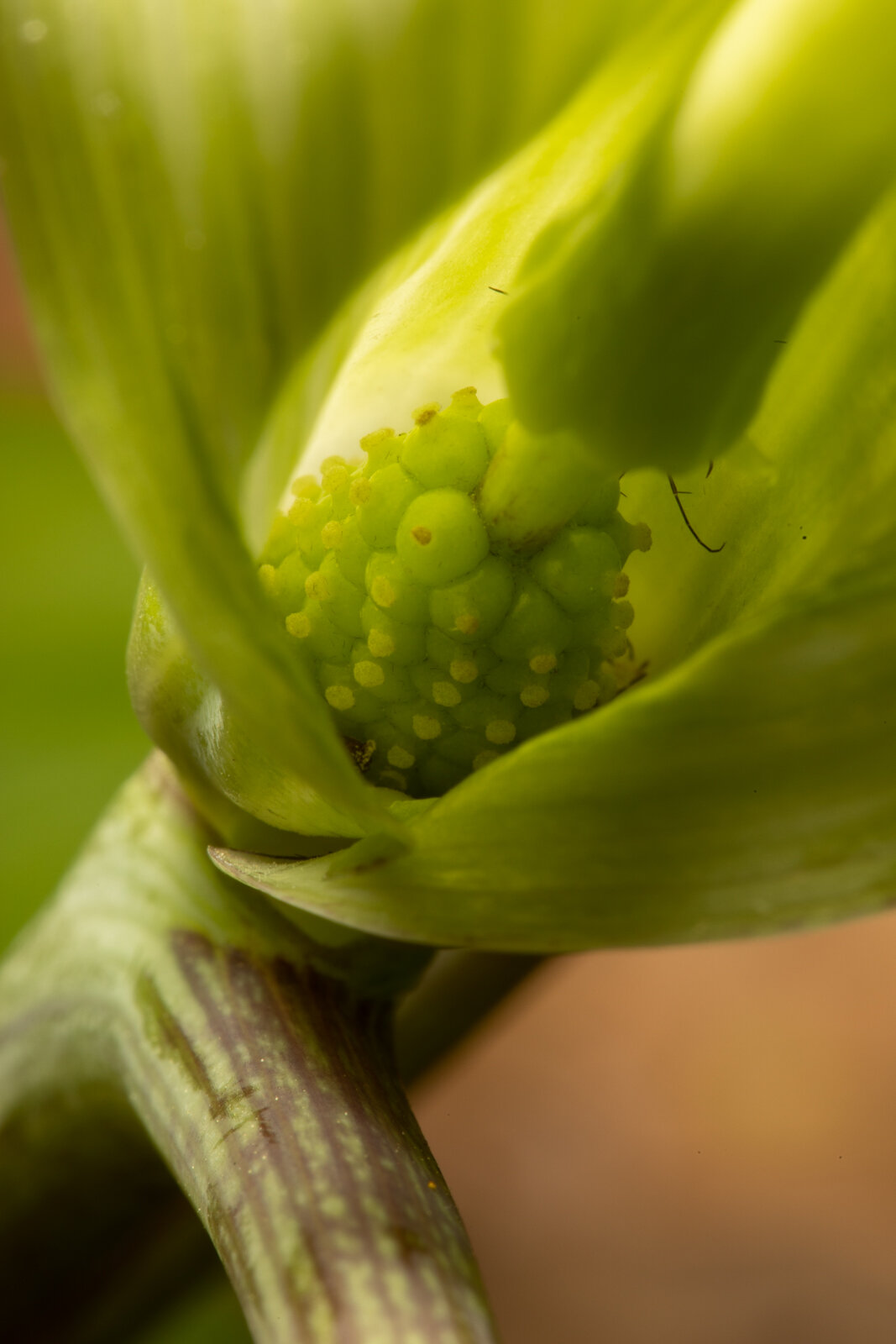We have 7 Jack (or Jill) in-the-pulpits currently growing in our shade garden at Pleasant View. This photo was taken at Pleasant View in mid-May. If you walk in the woods this time of year you're also likely to see them.
Jack-in-the-pulpit prefers shady moist, deciduous woods. If you can create similar conditions in your garden the plant will thrive. A long lived perennial (25+ years), it will spread and colonize over time. There are Asian species but I prefer our native Jack/Jill.
Check out extensive info on other native plants here.
Jack-in-the-pulpits are dioecious, meaning it has male and female flowers on different plants, thus Jack or Jill. Not only that, but depending on how healthy the plant is, it will change its sex: it can produce no flowers, male flowers, or female flowers from one year to the next. Because producing fruit takes the most energy, only very healthy plants produce female flowers. Typically, female flowers are borne on plants with two leaves. Male flowers take less energy to produce and they are typically borne on plants with only one leaf.
The two most noticeable parts of the Jack “flower” are the hood (the pulpit) and Jack himself, inside the pulpit. The pulpit is technically a spathe, which is a type of bract that often encloses the flower. (Like the dogwood bracts which most of us call 'flowers'.) Inside, “Jack” is technically called a spadix which is “a spike with small flowers crowded on a thickened axis.” See photos.
One feature to note is the small hole at the bottom of the inflorescence, right where the bract meets the stem, on male Jack-in-the-pulpits. The tentacle-y bits are the stamens which produce pollen. Apparently, the flowers emit an odor that mimics the scent of fungus, which attracts small flies and gnats. The hooded spathe, with lines that guide insects toward the bottom and lighter coloration at the bottom, lures insects in.
This is where that hole at the bottom of the bract comes in handy. On the male flowers, the gnats roam around and get coated in pollen… but most eventually find their way out via that hole. In the female flower, there’s no exit hole, and the insects may never find their way out, ensuring pollination.




